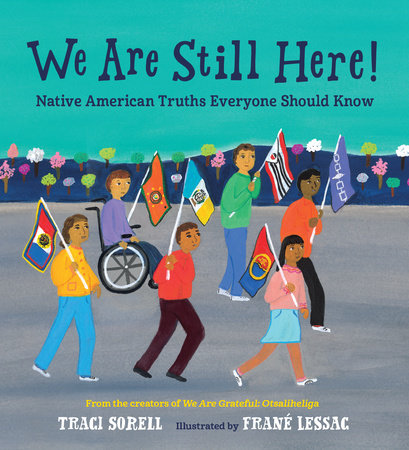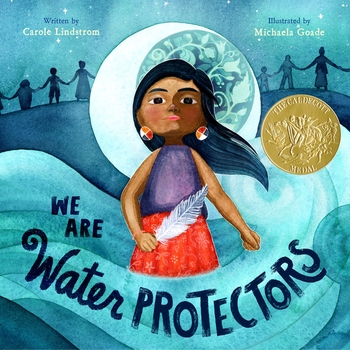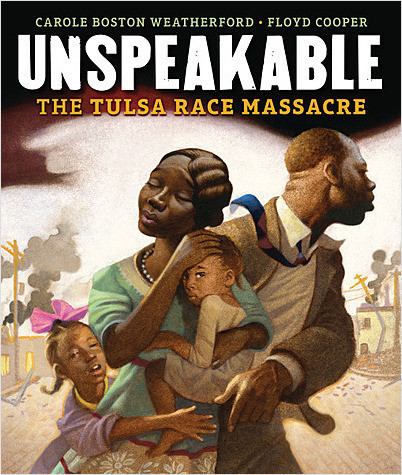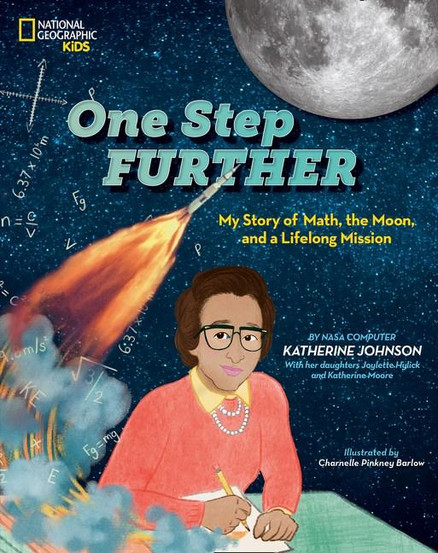Disrupting Nonfiction Part 4: Expository Literature
- Jennifer LaGarde

- May 6, 2021
- 6 min read
Updated: May 7, 2021
This is the fourth in a series of five blog posts that will serve as a guide for practicing “disruptive collection development” in the context of the nonfiction collection. Each day we’ll explore a different category of nonfiction (as developed by Melissa Stewart) along with strategies for thinking critically about the collection development procedures that we employ for selecting, cataloging and shelving those books. The first post in this series unpacks the inspiration for this work. As noted there...
The goal of “disruptive collection development” is to move beyond the occasional infusions of inclusivity offered by intentionally adding, or even focusing on, historically marginalized voices in book ordering throughout the year. While this is surely a best practice, it’s also a strategy that is rendered inconsistent and temporary by its dependence on the whims of staffing and funding. Only through holistic, purpose driven collection development can we move toward more permanent change that is both systemic and procedural.
Thank you to the team at Disrupt Texts who were early readers of these posts and who gave me permission to use the term "disrupt" in this context. Their mission charges us with challenging the traditional canon in order to create more inclusive, representative, and equitable collections. These posts are my attempt to support librarians in using their nonfiction collections as a vehicle for this important work.
To learn more about Melissa Stewart's five categories of nonfiction, I encourage you to visit the first post in this series which contains additional links and context. Links to each remaining post will be added as they are published.
Part 1: Traditional Nonfiction
Part 2: Active Nonfiction
Part 3: Narrative Nonfiction
Part 4: Expository Literature (You are here!)
Part 5: Browsable Nonfiction
Category 4: Expository Literature
Definition: “Unlike traditional nonfiction, expository literature presents narrowly focused topics, such as STEM concepts and processes, in creative ways that reflect the author’s passion for the subject. These books typically feature an innovative format and carefully chosen text structure, a strong voice, and rich, engaging language.” (Stewart, 2018)
Features:
Focused topics presented creatively
Strong voice and rich, engaging language Innovative format
Carefully chosen text structure
Expository writing style
Books about specialized ideas, such as STEM concepts
Disruptive collection development:
Using Data: Expository Literature in nonfiction provides you with the opportunity to use curricula data to disrupt the sections of the library that are most often used for instructional purposes.
Assessment data focusing on trends can be useful here. Use benchmark data, for example, to identify learning objectives that prove challenging for your readers. These objectives will point you to specific topics in your collection that require scrutiny. Questions to guide next steps are:
Whose accomplishments and contributions are reflected in the expository literature holdings in your collections? Whose are left out?
Does the expository literature in your collection support a curricula that excludes historically marginalized voices, or do these books help expand your learners' understanding of how the contributions of underrepresented people have shaped our world?
When students use these topic focused texts for research, are they immersed in content written, edited and illustrated by BIPOC, LGBTIA+ and/or differently abled experts in that field?
While curricula foci vary from state to state, curricula maps like this can be very useful in prioritizing sections of the collection for disruption, especially when paired with textbook adoptions. When scrutinizing these foundational tools the questions to focus on are:
Whose voices are missing from these resources?
Does the expository literature in your collection fill these gaps or do your holdings unintentionally reinforce them?
In the catalog: Subject headings in this section of the catalog will likely need a high level of attention. Not only will ensuring that terminology used is accurate and inclusive need to be a priority, but disrupting the hierarchy of those search terms will also prove an important challenge. For both, the curricula data you mine can prove useful as you consider what common research topics may fall under the umbrella of updated, justice oriented subject headings. This metadata can also serve as an effective instructional tool. The third post in this series unpacked some ways to do this using narrative nonfiction. Here's some tips for getting started in this category:
Working with teachers, have students identify missing subject headings as a way to demonstrate an understanding of the thematic connections between topics. For example, while researching the first 13 American Colonies, students may find that while the subject headings Pioneers, Founding Fathers and Indians (American) appear frequently in the titles related to this topic, other subject headings like Slavery, Racism and Genocide are missing.
From there, have learners build a crosswalk between subject headings to indices - both in your expository literature holdings and their textbooks.
Do the subject headings they've prioritized appear in the indexes of either? If not, why might they have been excluded? And if so, how often do they appear in comparison to other search terms?
What do your readers notice or wonder about the frequency in which some search terms appear in an index vs those with only sparse references?
You might even show kids “under the hood” of how library materials are cataloged to both demystify the process and to support their work as researchers. From there, asking kids to then suggest a new hierarchical order for those subject headings would lead to both meaningful debate and a rich way for students to demonstrate their understanding of the research they’ve just conducted.
See the first and third posts in this series for more information about subject headings.
Selection: Because expository literature in nonfiction is frequently used as an instructional tool, including teachers and other support staff, in the selection process can help answer questions that may come up later when “favorite” resources are replaced by newer more equitable options. Not only is disruption easier when you've got partners in the work, but transparency can lead to trust. With this in mind, here are some tips for getting started:
Form content area committees of teachers. Then guide them through the process of selecting titles. Be intentional to ensure that these committees include the very voices you seek to amplify within your collection. If this representation doesn't exist within your own teaching staff, expand your search to include community members, etc.
If you work with a specific vendor to purchase library materials, contact your representative to inquire about teacher accounts for selection websites. Teacher wishlists or online carts can then be compared with goals for inclusivity to help inform your selection decisions.
Take photos of teacher work sessions for inclusion on the school website or in a district newsletter.
Offer to write a post about the process for the superintendent's (or C&I director's, etc) blog.
Celebrate new holdings with a "book premier" event that featurees trivia about the books, topics and teachers involved.
Set reminders to survey teachers after new holdings have been used with students in order to collect information about their impact.
On the shelf: Expository literature offers us an opportunity to disrupt traditional shelving by thinking deeply about book pairings that both challenge and inspire. While traditional shelving models separate fiction from nonfiction from comics from makerED kits, etc., intentionally combining these formats and genres can be powerful and disruptive. Here are some potential resource pairings that could be shelved/displayed together for checkout simultaneously.
Example 1: Traci Sorell and Frane Lessac's We Are Still Here! Native American Truths Everyone Should Know (Expository Literature) paired with the A Girl Called Echo Series (YA Graphic Novels). This pairing provides readers with a rich and dynamic text set to help them think deeply about how the historical disenfranchisement of indigenous people continues to affect our world.
Example 2: Opening the Road Victor Hugo Green and His Green Book by Keila V. Dawson and Alleanna Harris (Expository Literature) paired with Nic Stone's Clean Getaway (MG Fiction). This pairing provides readers with an engaging and personal text set to help them think deeply about an important aspect of American history that is often left out of text books.
Example 3: No Way, They Were Gay? Hidden Lives and Secret Loves by Lee Wind (Expository Literature) paired with Mike Curato's Flamer (Graphic Novel). This pairing provides readers with a powerful and fascinating text set to help them think deeply about how marginalization forces people to hide who they are, keeping their contributions in the shadows while others are celebrated.
In addition to book pairings, build displays that connect a variety of expository literature around justice oriented themes.
Examples might include titles that feature BIPOC creators and inventors who changed history, stories of how LGBTQIA+ people have had to hide their identities to follow their passions, or how mental health challenges have affected leaders in every industry.
Recommended titles: Some recently published titles that can help you disrupt expository literature include:
Click on each image for more information about the book.
What's next?
Tomorrow, is the final post in this series on examining nonfiction through the lens of disruptive collection development practices. In that post, we'll take a deep dive into Browsable Nonfiction. I look forward to thinking deeply about how to leverage these beautiful, browsable texts to create more inclusive, representative, and equitable collections.
Acknowledgements:
Thank you again to the founders of Disrupt Texts (Tricia Ebarvia, Lorena German, Dr. Kim Parker, and Julia Torres) for allowing me to partner with them in this work.
Thank you to Becky Calzada, Lynsey Burkins, Franki Sibberson, John Shu and Donalyn Miller for being early readers of these posts and for offering their expert feedback.




























